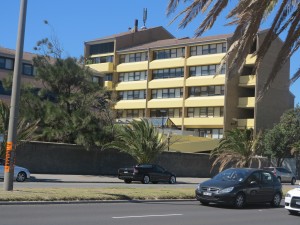Action taking place to make it easier for strata-based buildings to connect to NBN
Article
NBN Co, strata tie-up to ease fibre into unit blocks – Telco/ISP – Technology – News – iTnews.com.au
From the horse’s mouth
Strata Community Australia
Registration Page (work in progress, check back regularly)
My Comments
There is action taking place to make it easier for strata-based multi-dwelling buildings to connect to the National Broadband Network. Primarily this is where each unit (flat, home unit, office suite, shop, etc) is owned by an individual who either occupies it or leases it out, but the building is ran by a “body corporate” or “owners’ committee”.
At the moment, where there is National Broadband Network constactivity in your area, someone representing the “body corporate” has to register the multi-unit development with the NBN in order to have it prepared for this technology.
There isn’t the opportunity for a “body corporate” to register their development ahead of time in order to have the arrangement in place. If this existed, it could allow the “body corporate” to plan well ahead for equipping their building with NBN fibre-optic cabling.
Why show interest in setting up that building for NBN?
Whether you are a resident of an apartment in one of these buildings or are a member of a body corporate / owners’ committee for that strata-title development, you may have doubts about the relevance of the National Broadband Network to your building.
The National Broadband Network is relevant to the online lives of those of us who live or work in these buildings. This fibre-optic next-generation network provides a data bandwidth that is higher than what we normally have for an ADSL-based or cable-modem-based broadband service.
This can underscore the ability for most of us to work from home or have a real business-grade broadband service which can do more at our office suite or shop. As well, the broadband Internet service is becoming the sole path for communications and entertainment data with such things as VoIP (including Skype), IPTV (including video-on-demand / catch-up TV) and Internet radio / music-streaming services.
What happens after you register the building?
When the NBN start working in your building’s area
The legal owner or strata manager for the building will receive contact from NBN to verify the registration for this work.
After this is done, the residents or occupants will receive a mail drop in their letterboxes regarding the NBN work.
One strata manager, the Strata Management Group recommend that a body-corporate should convene a special meeting about the NBN when they receive this initial contact. This can make the whole of the body corporate aware of what is going on and how it concerns the building. This can include issues like awareness of ducting and conduits that are already used to channel telephone and other low-voltage cabling, wiring closets or equipment rooms where the NBN equipment can exist and where the service demarcation points for the apartments should be. This is also the time to identify the body-corporate representative who will liaise with the NBN through the installation phase.
As well, I would suggest that you look through articles and videos published on the Internet from Europe and other countries where fibre-optic broadband deployments have taken place to see how apartment blocks and similar buildings have been wired up for this new technology.
Installation Phase
There will be further contact with the body-corporate representative with a letter that outlines the inspection and installation activities
These will encompass the drafting of the layout for the fibre-optic wiring with an initial survey of the building. Here, they should look for any plenums or ducts that are being used to run telephony, TV-aerial, cable-TV or similar wiring and, if possible make use of these spaces.
Then the NBN crew will pull the fibre from the street to a connection box outside each unit / apartment. Here, you may have to have the occupants aware of the technicians working through the building especially in relation to safety. This is more so with elderly people or parents with young children. As well, it is also worth identifying whether the technicians need to be in any apartments while pulling through common fibre-optic cabling. This issue may be of concern with access to the apartment as well as assuring the occupants of their privacy.
Connection phase
In this phase, the NBN service will be switched on from the street in to the common wiring infrastructure. The residents or occupants will receive in their letterboxes a mail drop about the availability of National Broadband Network service in their building, with advice to contact their preferred service provider to sign up for service.
When the resident orders the next-generation broadband service, NBN will send technicians to wire up service within the apartment / unit and install the ONT (fibre-optic modem).
At this time, I would recommend that the “body corporate” supplies further information to the residents or occupants about what the NBN next-generation broadband is about as part of the regular newsletter or magazine.
This includes awareness that the ADSL modem-router or cable-modem-router won’t be of use anymore unless it has Ethernet broadband connectivity. Here, the residents or occupants connect to Internet using a broadband router that has Ethernet WAN/Internet connection with this connection plugged in to the optical network terminal provided as part of the NBN install.
Conclusion
This article will make you, whether as an occupant of a flat or a member of a body-corporate, aware about having that multi-unit development set up for the next-generation broadband Internet service that is the NBN.

